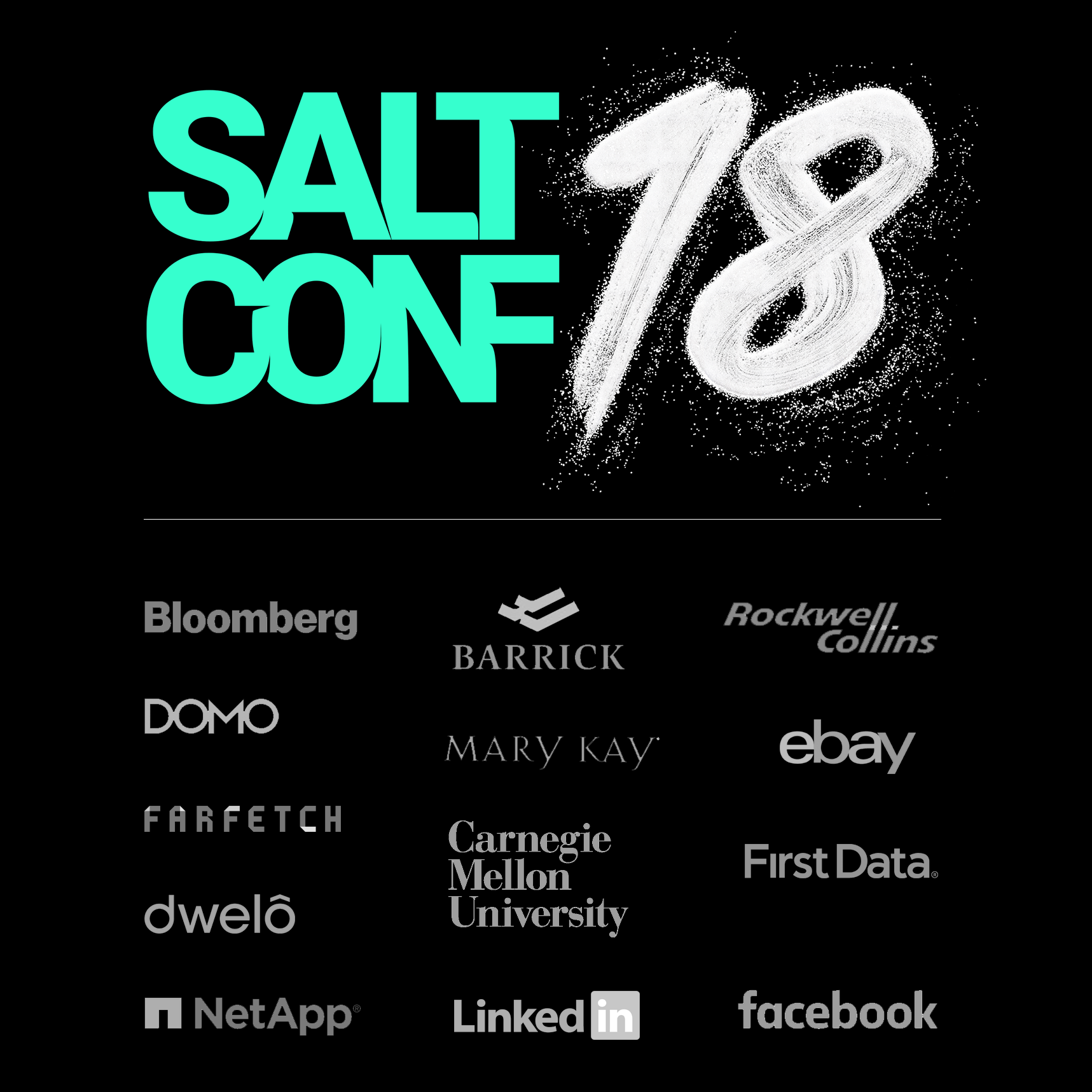salt.states.docker_image¶
Management of Docker images
New in version 2017.7.0.
| depends: | docker Python module |
|---|
Note
Older releases of the Python bindings for Docker were called docker-py in
PyPI. All releases of docker, and releases of docker-py >= 1.6.0 are
supported. These python bindings can easily be installed using
pip.install:
salt myminion pip.install docker
To upgrade from docker-py to docker, you must first uninstall docker-py, and then install docker:
salt myminion pip.uninstall docker-py
salt myminion pip.install docker
These states were moved from the docker state
module (formerly called dockerng) in the 2017.7.0 release.
Note
To pull from a Docker registry, authentication must be configured. See here for more information on how to configure access to docker registries in Pillar data.
-
salt.states.docker_image.absent(name=None, images=None, force=False)¶ Ensure that an image is absent from the Minion. Image names can be specified either using
repo:tagnotation, or just the repo name (in which case a tag oflatestis assumed).- images
Run this state on more than one image at a time. The following two examples accomplish the same thing:
remove_images: docker_image.absent: - names: - busybox - centos:6 - nginx
remove_images: docker_image.absent: - images: - busybox - centos:6 - nginx
However, the second example will be a bit quicker since Salt will do all the deletions in a single run, rather than executing the state separately on each image (as it would in the first example).
- force : False
Salt will fail to remove any images currently in use by a container. Set this option to true to remove the image even if it is already present.
Note
This option can also be overridden by Pillar data. If the Minion has a pillar variable named
docker.running.forcewhich is set toTrue, it will turn on this option. This pillar variable can even be set at runtime. For example:salt myminion state.sls docker_stuff pillar="{docker.force: True}"
If this pillar variable is present and set to
False, then it will turn off this option.For more granular control, setting a pillar variable named
docker.force.image_namewill affect only the named image.
-
salt.states.docker_image.mod_watch(name, sfun=None, **kwargs)¶ The docker_image watcher, called to invoke the watch command.
Note
This state exists to support special handling of the
watchrequisite. It should not be called directly.Parameters for this function should be set by the state being triggered.
-
salt.states.docker_image.present(name, build=None, load=None, force=False, insecure_registry=False, client_timeout=60, dockerfile=None, sls=None, base='opensuse/python', saltenv='base', **kwargs)¶ Ensure that an image is present. The image can either be pulled from a Docker registry, built from a Dockerfile, or loaded from a saved image. Image names can be specified either using
repo:tagnotation, or just the repo name (in which case a tag oflatestis assumed). Repo identifier is mandatory, we don't assume the default repository is docker hub.If neither of the
buildorloadarguments are used, then Salt will pull from the configured registries. If the specified image already exists, it will not be pulled unlessforceis set toTrue. Here is an example of a state that will pull an image from the Docker Hub:myuser/myimage:mytag: docker_image.present
- build
Path to directory on the Minion containing a Dockerfile
myuser/myimage:mytag: docker_image.present: - build: /home/myuser/docker/myimage myuser/myimage:mytag: docker_image.present: - build: /home/myuser/docker/myimage - dockerfile: Dockerfile.alternative
New in version 2016.11.0.
The image will be built using
docker.buildand the specified image name and tag will be applied to it.- load
Loads a tar archive created with
docker.load(or thedocker loadDocker CLI command), and assigns it the specified repo and tag.myuser/myimage:mytag: docker_image.present: - load: salt://path/to/image.tar
- force : False
- Set this parameter to
Trueto force Salt to pull/build/load the image even if it is already present. - client_timeout
- Timeout in seconds for the Docker client. This is not a timeout for the state, but for receiving a response from the API.
- dockerfile
Allows for an alternative Dockerfile to be specified. Path to alternative Dockefile is relative to the build path for the Docker container.
New in version 2016.11.0.
- sls
Allow for building of image with
docker.sls_buildby specifying the SLS files with which to build. This can be a list or comma-seperated string.myuser/myimage:mytag: docker_image.present: - sls: - webapp1 - webapp2 - base: centos - saltenv: base
- base
- Base image with which to start
docker.sls_build - saltenv
- Environment from which to pull SLS files for
docker.sls_build
